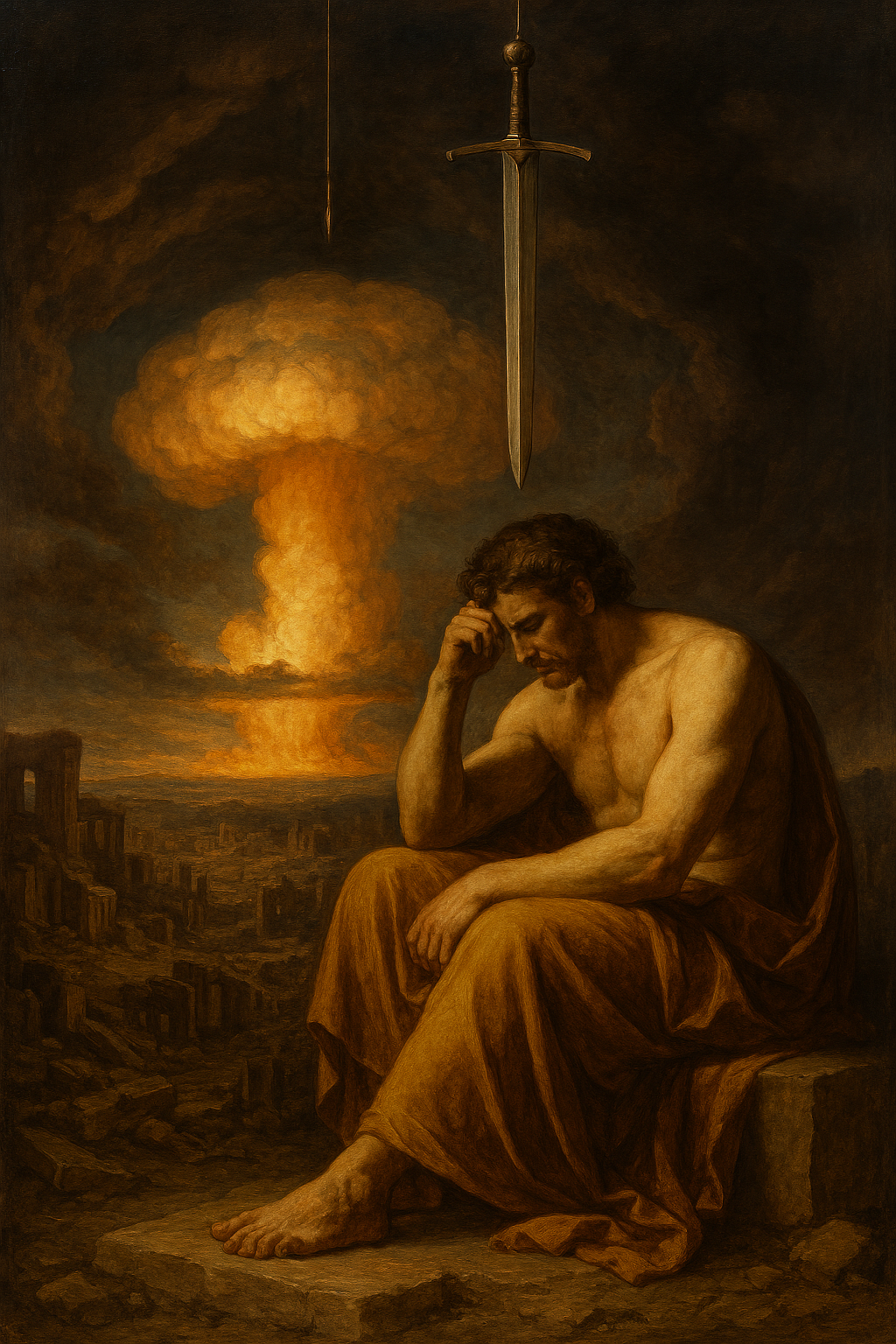Remembering Hiroshima: Fragile Hopes for a Russia–Ukraine Peace
AI Artwork Conducted By James Hall
As fragile hopes for a Russia–Ukraine peace deal build around Friday’s Alaska summit between Presidents Vladimir Putin and Donald Trump, it’s timely to revisit a passage from “The Sword of Damocles: Our Nuclear Age”—now available on Audible.
☢️ The Specter Returns
With nuclear weapons once again surfacing in daily news and proliferating across social media, we must recall history—not just its facts, but its emotional truths.
(From Chapter Eight, by James Hall, “The Sword of Damocles: Our Nuclear Age.”)
"We often forget that atomic warfare has already occurred. Japan was forced into closure of the Second World War through the use of nuclear weapons. At the time, the bombings were widely seen as a miraculous, war-ending maneuver. For many veterans and their families, the A-bomb represented not only closure but salvation—an end to years of suffering and a means of avoiding a bloody land invasion of Japan.
That perception held sway until August 31, 1946, when "The New Yorker" published a groundbreaking article by John Hersey. In it, Hersey told the story of six Hiroshima survivors. The former war correspondent’s account was so powerful that it was soon republished as a book titled "Hiroshima." To this day, Hersey’s work shapes public understanding of nuclear weapons and their potential consequences.
A Shift in Perspective
During the Pacific War, Hersey had written for "Life," documenting a young Lieutenant John F. Kennedy’s journey through the Solomon Islands. But it was his article about Hiroshima that marked a turning point in American consciousness.
Hersey’s article introduced the nation to the horrors of radiation sickness. Readers began to grasp that nuclear weapons, if acquired by another power, could one day be used against them as well. The story’s greatest impact wasn’t in recounting the past—it was in making people think about the future. At the time, the US held a nuclear monopoly, and many naïvely believed it would last. But after reading Hersey, it became impossible to ignore the vulnerability shared by all humanity.
Though I was born fifty-five years after the event, reading "Hiroshima" didn’t just make me empathize with Japanese victims—it made me imagine myself in their place.
The Power of Narrative
Hersey pioneered what would later be called “New Journalism”—telling nonfiction stories with the techniques of fiction. His reporting was so meticulous, his prose so calm and restrained, that the horror emerged with chilling clarity. As "New Yorker" journalist Hendrik Hertzberg wrote:
“Hersey’s reporting was so meticulous, his sentences and paragraphs were so clear, calm and restrained, that the horror of the story he had to tell came through all the more chillingly.” (Hendrik Hertzberg, Obituary of John Hersey, "The New Yorker," March 29, 1993, http://www.newyorker.com/archive/199304/05/1993_04_05_111_TNY_CARDS_00036522.)
Though Hersey had long worked for "Time-Life," he chose "The New Yorker" for its format and freedom. The magazine devoted an entire issue to his article—a decision that helped cement its legacy.
Why It Still Matters
This is a story everyone should read—especially now, as the nuclear issue grows increasingly grave. Hersey’s work reminds us that behind every geopolitical strategy are human lives. And in the shadow of nuclear weapons, we are all equally vulnerable." JH
(Thus the theme of our book, “The Sword of Damocles: Our Nuclear Age,” Michael and James Hall.)
Photo Credit: "Hiroshima"--The John Hersey Book is based on his August 31, 1946, article in “The New Yorker.”

